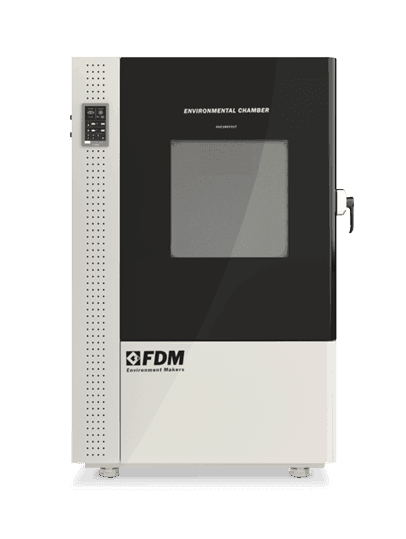
The Climate Chamber is an essential laboratory tool for performing a wide range of climate tests on materials.
However, it is very important to know the climatic chambers specifications that we are going to buy because, depending on the operation and the possibilities of each environmental chamber, some tests will or will not be practicable.
So let's see the technical specifications to keep an eye on in each climatic chamber and then observe each one in detail.
What are the Climatic Chambers Specifications?
The first technical feature to take into consideration, it may seem trivial to say, is the size of the climatic chamber. Due to the variety of materials that are subject to climate testing, climate chambers have dimensions that differ greatly from each other.
In absolute terms, the capacity of a chamber can range from 20 up to 400,000 liters, which is so large that it can test entire vehicles.
The FDM climatic chambers have a range that goes from 140 up to 2300 liters, depending on the needs.
As for the parameters, the fundamentals are the control of temperature and humidity, two technical specifications that characterize the climatic chamber and cannot be missing in any of these. There are also climatic chambers that can perform more precise environmental tests, using additional tools. We will analyze them all in detail.
Perform
Climate Stress
Discover the new series of Climate Chambers for controlled climate testing
Climatic Chamber Specifications: the Temperature
Temperature control is essential in any climate test. Most climatic chambers have a range that goes from -25 ° C to + 70 ° C. A particular type of climatic chamber for extreme conditions are environmental chambers that cover temperatures from -40 ° C to + 180 ° C.
How does the temperature control in the climatic chamber work? In two different ways.
To raise the temperature, the climatic chambers make use of the electrical resistance while making use of the refrigeration unit to cool the chamber.
Climatic Chamber Specifications: Humidity
The second fundamental factor of any climatic chamber is humidity control. There are also differences between chambers and chambers for the range of humidity that can be reached. A standard climatic chamber has a range between 10% up to 80%, while environmental and growth chambers can reach 98%, that is, close to saturation.
There are two ways to produce humidity in the climate chamber.
Some products use ultrasound technology while others use the evaporation of water with a heat source. The vapor rises to the top of the environmental chamber, where it is cooled again, increasing the total humidity in the test chamber.
Perform
Extreme Testing
Discover the new series of Environmental Chambers for controlled climate testing
Climatic Chamber Specifications: Lighting and Nozzles
Climate chambers may have other technical specifications that allow for further testing. These include lighting systems and nozzles.
The lighting systems are used to reproduce the effect of sunlight and are essential both in the growth chambers for organic crops but also in certain accelerated aging tests of materials.
The lamps can be fluorescent, xenon or LED and be positioned vertically or horizontally with respect to the test plane.
Another accessory that can be added as a specification for a climatic chamber is the nozzle for the salt spray test. These diffusers spray a salty solution capable of causing the corrosive phenomenon in the materials to be tested. We talked about it in detail here.
Climatic Chamber Specifications: stillFACE and revoFACE controllers
The latest technical climatic chamber specifications that we have to deal with are the two digital controllers that guarantee the success of the processes.
The FDM climatic chambers have two: the stillFACE controller and the revoFACE programmer.
The stillFACE controller is a stability test controller with constantly monitored temperature and humidity controllers. It can be associated with an optional RS485 interface port.
The revoFACE programmer organizes dynamic tests with 10 programs and 50 segments each, adjustable from 1 min to 999 hours. Optionally, it can have the RS485 interface port or Ethernet, Wifi and a dedicated mobile App.
Both controllers are simple and intuitive and assist the operator at every stage of the process.
Would you like to receive a quote or do you have questions about the product?
Contact us to receive more information about this Product.



